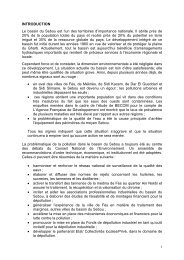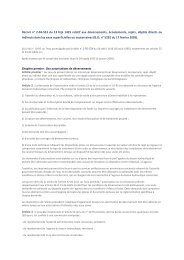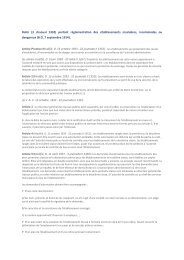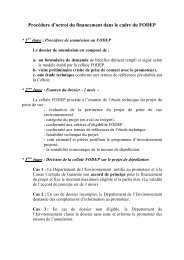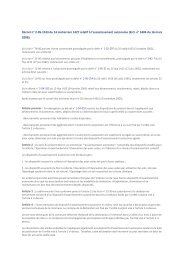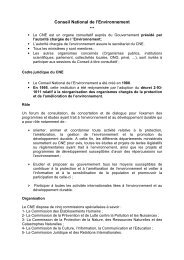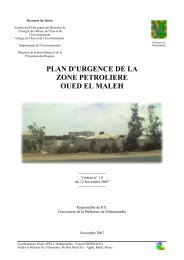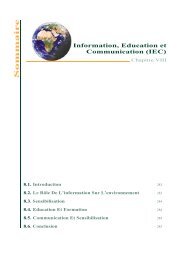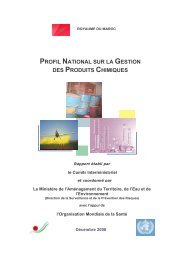Stratégie et Plan - Département de l'environnement
Stratégie et Plan - Département de l'environnement
Stratégie et Plan - Département de l'environnement
Create successful ePaper yourself
Turn your PDF publications into a flip-book with our unique Google optimized e-Paper software.
La communication institutionnelle<br />
Communication interne<br />
La réponse à la faiblesse <strong>de</strong> la circulation <strong>de</strong> l’information au sein d’un Département ministériel comme celui <strong>de</strong><br />
l’Environnement passe par une organisation <strong>de</strong>s flux qui associe communication <strong>de</strong>scendante, communication<br />
ascendante <strong>et</strong> communication horizontale.<br />
• La communication <strong>de</strong>scendante est la plus naturellement pratiquée suivant la décroissance hiérarchique.<br />
Elle forme, informe <strong>et</strong> dirige le personnel <strong>et</strong> les collaborateurs. Elle doit être rationalisée <strong>et</strong> bénéficier d’un<br />
développement <strong>de</strong>s supports qui y sont associés.<br />
• La communication ascendante part du bas pour remonter hiérarchiquement. L’information qu’elle véhicule<br />
est moins institutionnalisée <strong>et</strong> utilise <strong>de</strong>s voies informelles (oralité). Elle est plus difficilement maîtrisée, souvent<br />
négligée mais très utile pour l’i<strong>de</strong>ntification <strong>de</strong>s aspirations, le désamorçage <strong>de</strong> tensions <strong>et</strong> l’amélioration <strong>de</strong>s<br />
performances <strong>de</strong> fonctionnement du Département <strong>de</strong> l’Environnement. Son organisation doit lui perm<strong>et</strong>tre, avec<br />
l’appui <strong>de</strong> supports spécifiques, <strong>de</strong> jouer son rôle d’équilibre au sein <strong>de</strong>s flux <strong>de</strong> circulation <strong>de</strong> l’information.<br />
• La communication horizontale consiste en un échange d’informations sans lien hiérarchique entre les services<br />
<strong>et</strong> se fait plus naturellement dans les p<strong>et</strong>ites structures. Sa reconnaissance <strong>et</strong> sa rationalisation renforcent<br />
« l’esprit d’équipe » <strong>et</strong> « l’esprit-maison ».<br />
Organiser…<br />
Par ailleurs, le contenu <strong>de</strong> l’information au sein du Département <strong>de</strong> l’Environnement doit se répartir en <strong>de</strong>ux<br />
gran<strong>de</strong>s catégories :<br />
• L’information opérationnelle : elle est directement liée à la bonne transmission <strong>de</strong>s instructions sur <strong>de</strong>s suj<strong>et</strong>s en<br />
rapport direct avec le bon fonctionnement du Département (organisation, processus <strong>de</strong> production, qualité…).<br />
• L’information motivante : elle véhicule <strong>de</strong>s messages mobilisateurs <strong>et</strong> est susceptible d’abor<strong>de</strong>r 3 domaines :<br />
le Département (son environnement <strong>et</strong> ses objectifs), ses productions (publications, étu<strong>de</strong>s, évaluations…) <strong>et</strong><br />
son organisation interne.<br />
… <strong>et</strong> classifier<br />
20<br />
Stratégie <strong>et</strong> <strong>Plan</strong> <strong>de</strong> communication • Département <strong>de</strong> l’Environnement



